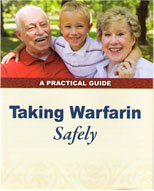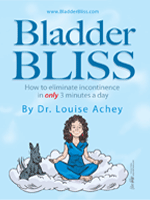Replacing Your Estrogen Replacement
Tags: black cohosh, Breast Cancer Awareness Month, estrogen, Evista®, hot flashes, hot flushes, night sweats, Remifem, SERMs, soy, STAR trial, tamoxifen
Q: My sister was just diagnosed with breast cancer. I quit taking my estrogen pills but the hot flashes and night sweats came back. Is there anything I can switch to that won’t increase my risk of breast cancer?
First, please talk to your doctor as soon as possible about your sister’s diagnosis and how it affects your own risk for breast cancer. Additional screening tests may be recommended for you.
Menopause brings many changes, such as night sweats, “hot flashes”, trouble sleeping, fatigue, thinning of your bones, and vaginal dryness. Taking supplemental estrogen can relieve these annoying symptoms and keep your bones strong, but also increases your risk of developing blood clots, breast cancer or having a heart attack.
Stopping your estrogen all at once can make these menopausal symptoms come roaring back. Tapering off estrogen is usually gentler and easier than just stopping it. Some years ago there was a study called the STAR trial (Study of Tamoxifen And Raloxifene), in which the women participating in it first had to stop taking their estrogen replacement medicine. The method that seemed to work best was skipping one day of estrogen in the first week, skipping two days of estrogen in the second week, skipping three days in the third week, and continuing that pattern until the ladies were off their estrogen completely .
The way the STAR trial tapered the estrogen was different than you might think. Instead of evenly spacing the skipped doses, they had the study participants skip Sunday’s dose in Week 1, Sunday and Monday’s doses in Week 2, Sunday, Monday, and Tuesday’s doses in Week 3, and so on. It really surprised me that it works fine either way you do it – by skipping estrogen pills bunched up in a row on Monday, Tuesday and Wednesday, or by spreading the skipped days out to Monday, Wednesday and Friday.
If you experience “hot flashes” or other breakthrough symptoms during your taper, I suggest going back to your previous week’s dose and staying on that for 2 to 4 weeks before trying to taper down again. Instead of doing only 1 week at each level, try staying at the level for 2 to 4 weeks before dropping another dose, then 2 to 4 weeks at the next lower level, and so on until you are completely off of the estrogen.
When we tell our medical provider we have “hot flashes”, the doctor knows what we mean, but that’s not what their medical books call it. I think it’s funny that the medical term used in textbooks for what we call a “hot flash” is a “hot flush”. When I think of a “hot flush” I see a high stakes poker game or a toilet bowl cleanser commercial with Mr. Clean clad in tight black leather pants.
After you have tapered off estrogen, what now? That depends on why you were taking estrogen in the first place. The two major benefits of taking estrogen are reducing menopause-related symptoms (the night sweats, “hot flashes”, and vaginal dryness) and preventing bone loss and future hip fractures from osteoporosis.
Adding a little bit of soy to your diet or taking the herbal product Remifemin® (a formulation of black cohosh) may help reduce “hot flashes”and night sweats. In order to prevent bone loss and osteoporosis you should talk to your doctor about prescription medicines that can protect your bones while decreasing your risk of breast cancer.
Prescription medicines called selective estrogen receptor modulators, or SERMs can act just like estrogen in some areas of your body while blocking the effects of estrogen in other areas. I call these “designer estrogens” because they are designed to mimic the benefits of estrogen supplementation and work in some tissues while having no effect on other parts of your body.
There are two SERMs available in the United States: Evista®, also called raloxifene, and tamoxifen. Evista® is prescribed to prevent and treat osteoporosis in postmenopausal women who can’t or shouldn’t take estrogen, either because they’ve had a blood clot, a stroke, or because of a high risk of developing invasive breast cancer. You can estimate your breast cancer risk at the National Institutes of health (NIH) website: www.cancer.gov/bcrisktool.
The older SERM, tamoxifen, is given to both men and women who have had breast cancer in after surgery or radiation to decrease the risk of a recurrance. Tamoxifen is also prescribed for breast cancer that has come back or has spread to other areas of the body.
October is Breast Cancer Awareness month. Please discuss your risk of breast cancer and osteoporosis with your medical providers, who are your partners in developing a strategy for prevention and early detection of breast cancer.
Xylitol Helps Teeth But Toxic to Dogs
Tags: animal poison control center, dogs, IceBreakers, sugar substitutes, xylitol
Joyce’s Story
Tags: aloe vera, anastrozole, Arimidex, radiation therapy, why dogs can't eat chocolate
A nice lady named Joyce contacted me a couple of weeks ago. She had bought my book Why Dogs Can’t Eat Chocolate: How Medicines Work and How YOU Can Take Them Safely and it had given her the courage to ask some tough questions about the medicine she was taking for prevention of breast cancer.
A few years ago Joyce’s mammogram showed a lump that proved to be cancerous, and she underwent a lumpectomy, followed by 35 radiation treatments over the next 7 months.
After completing the surgery and radiation for her breast cancer, her oncologist started her on a medicine called anastrozole, the generic version of Arimidex® to help prevent a recurrence of her breast cancer. They planned for her to take it for 5 years and she had been taking it for almost 2 and half years with no problems.
“I had been doing just fine, until this spring. I thought my allergies were acting up. I’d sometimes see little red dots on the inside of my arms, which eventually faded away. Then something changed. The tips of my ears started to tingle, feel hot, and turn a fiery red color. But I could make that go away by taking an antihistamine, so I continued to think it must be just a bad year for my allergies.”
“By the first of August the rash had spread from my ear tips to my neck, though I still got relief by taking my antihistamine. And when the rash spread to my thighs I was one week away from leaving on a wonderful trip to Scotland and I began to worry. What if the rash continued to spread? I didn’t want to cancel my special trip but I surely didn’t want to be miserable on it either.”
“I was reading your book Why Dogs Can’t Eat Chocolate and got to the part where you encouraged us to Be A Squeaky Wheel and to SPEAK UP, not give up. I wondered, “Could my rash be related to my breast cancer medicine? I’ve taken it without any problems for over 2 years.”
As I listened to Joyce, with her on schedule to leave for Scotland in only 5 days, I advised her to go ahead and stop the medicine but also to call her doctor immediately and explain her situation. Her rash was getting worse, and yes, her Arimidex® could be the reason. If it was caused by the medicine she needed to stop taking it.
“Joyce, please call your doctor and make an appointment as soon as possible to discuss what has been happening, so she can advise you on what other options you have. She needs to know that you are having these symptoms, so she can help you. You did the right thing by speaking up.”
I heard back from Joyce a couple of weeks ago, after she returned from her trip. “The rash went away the day I stopped that medicine and has never come back. I had a wonderful time on my trip, and I didn’t need to take any antihistamines,” she wrote. “I saw my doctor the week after I got back and she told me I had done the right thing to stop the medicine. We discussed it and she started me on a different medicine that’s for the same thing, and I have had no problems taking it so far. Hopefully I can complete my last two and a half years of treatment with this new one”.
“I really appreciate you and your Why Dogs book because it gave me the courage to speak up about my symptoms instead of just putting up with them. You gave me the encouragement I needed to go talk to my doctor about my problem and ask for something else. Thank you.”
“By the way, I was interested in your article on skin treatment to prevent radiation burns and thought you might want to pass on this tip to your readers that I got from my radiologist in Seattle. He recommended I buy the purest aloe Vera juice I could find and to apply it to the skin area after each radiation treatment (never before, just after). I looked around and found some pure aloe juice at Trader Joe’s. I used it after every treatment and never had any discomfort after any of my treatments.”



